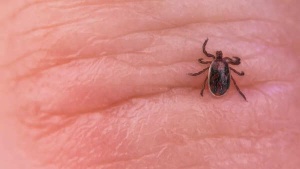Prediabetes is characterized by elevated blood sugar levels, higher than normal but not yet in the diabetic range. Early detection is key, as this condition is often reversible. A tailored diet and exercise regimen can potentially restore blood sugar to healthy levels within months. While a blood test provides definitive confirmation, the body often exhibits telltale signs indicating elevated blood sugar. Here are five such indicators, though it's important to note that these symptoms are not exclusive to prediabetes.
One of the initial symptoms of high blood sugar is increased thirst. When blood sugar levels are too high, the kidneys work overtime to filter out the excess sugar through urine production. This leads to more frequent urination, potentially causing dehydration.
This creates a cycle: dehydration intensifies the feeling of thirst, even with regular water intake. Constant thirst coupled with frequent bathroom trips may signal rising blood sugar levels.
Persistent tiredness, even after adequate sleep, can serve as a warning sign. High blood sugar can disrupt the body's ability to utilize glucose (sugar) for energy.
When cells don't receive enough glucose, weakness and fatigue can set in.

This type of fatigue differs from typical tiredness, as it persists even after rest. Difficulty concentrating and maintaining alertness during the day may also occur. Experiencing constant fatigue, including daytime sleepiness, warrants a medical checkup.
Prediabetes can manifest on the skin. The appearance of dark, thick, and velvety patches may occur on areas such as the back of the neck, underarms, or around the groin. This condition is known as acanthosis nigricans.

These patches are caused by elevated insulin levels in the blood, a common characteristic of prediabetes. The sudden appearance or worsening of these skin changes indicates a potential struggle in blood sugar control.
High blood sugar can impair the body's natural healing process. Extended healing times for minor cuts or bruises can be indicative of prediabetes.
Elevated blood sugar compromises the immune system and can reduce blood flow to the skin. This combination slows down healing and increases the risk of infection. If wounds are slow to heal, seeking medical advice is crucial.
Individuals with prediabetes often experience increased hunger, even shortly after meals. This results from the body's cells not receiving sufficient glucose for energy. Consequently, the brain signals the need to eat more, regardless of actual hunger levels.
This heightened hunger can lead to overeating and subsequent weight gain, further complicating blood sugar control. Persistent hunger or cravings, especially for sugary and starchy foods, can be a sign that something is amiss.
Newer articles
Older articles
 Vijay Officially Named TVK's Chief Minister Hopeful for Tamil Nadu's 2026 Election
Vijay Officially Named TVK's Chief Minister Hopeful for Tamil Nadu's 2026 Election
 RJ Mahvash Prioritizes Work Over Buzz, Addresses Link-Up Speculation
RJ Mahvash Prioritizes Work Over Buzz, Addresses Link-Up Speculation
 UNESCO's World Heritage Wonders: Unveiling 10 Iconic Sites, From Petra to the Pyramids
UNESCO's World Heritage Wonders: Unveiling 10 Iconic Sites, From Petra to the Pyramids
 JPG to PDF: A Comprehensive Guide for Graphic Designers & Professionals
JPG to PDF: A Comprehensive Guide for Graphic Designers & Professionals
 iQoo Z9 Turbo: Rumored Specs Emerge – Snapdragon 8s Gen 3, 6000mAh Battery Highlighted
iQoo Z9 Turbo: Rumored Specs Emerge – Snapdragon 8s Gen 3, 6000mAh Battery Highlighted
 Shadman Islam Defends Bangladesh Batters After Day 1 Struggles Against Sri Lanka
Shadman Islam Defends Bangladesh Batters After Day 1 Struggles Against Sri Lanka
 England's Bold Claim: Could They Have Chased Down 450 Against India?
England's Bold Claim: Could They Have Chased Down 450 Against India?
 5 Often-Missed Warning Signs of Bladder Cancer You Need to Know
5 Often-Missed Warning Signs of Bladder Cancer You Need to Know
 KL Rahul Puts Country First, Prioritizes England Tests Over Newborn Child
KL Rahul Puts Country First, Prioritizes England Tests Over Newborn Child
 Tick Bite Paralyzes Fitness Influencer: A Wake-Up Call for Outdoor Enthusiasts
Tick Bite Paralyzes Fitness Influencer: A Wake-Up Call for Outdoor Enthusiasts